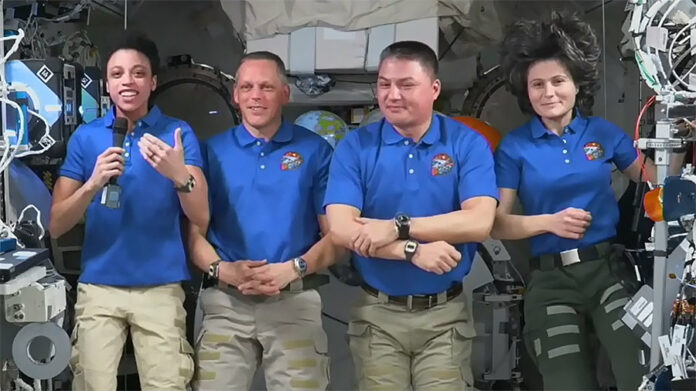Introduction
In the grand tapestry of human exploration, few endeavors captivate our collective imagination quite like space travel. For decades, NASA has been at the forefront of this adventure, pushing the boundaries of human knowledge and capability. One of the most recent chapters in this odyssey is NASA’s SpaceX Crew-4 mission. Join us as we embark on a journey through the realms of space and scientific discovery, where astronauts boldly go where few have gone before.
The Crew
SpaceX Crew-4 is a testament to international cooperation. This mission featured a diverse crew, showcasing the global nature of space exploration. At its helm was NASA astronaut Kjell Lindgren, who previously flew aboard the International Space Station (ISS) during Expedition 44/45. Joining him were ESA (European Space Agency) astronaut Samantha Cristoforetti, JAXA (Japan Aerospace Exploration Agency) astronaut Koichi Wakata, and ESA’s Andreas Mogensen, making this a truly international crew.
Liftoff and Destination
On April 15, 2023, the Crew-4 mission launched from Kennedy Space Center in Florida, riding atop a SpaceX Crew Dragon spacecraft. Their destination? None other than the International Space Station, a marvel of human engineering and a symbol of international collaboration. The ISS orbits the Earth at an altitude of approximately 420 kilometers (260 miles) and serves as a vital laboratory for scientific research in the unique microgravity environment of space.
Scientific Objectives
The primary focus of Crew-4’s mission was scientific research. Here are some of the key scientific objectives they pursued:
- Microgravity Research: The Crew-4 astronauts conducted experiments that can only be performed in the microgravity environment of space. This included studies on the effects of weightlessness on the human body, as well as investigations into fluid dynamics, combustion, and material science.
- Earth and Space Observation: The ISS provides an unparalleled vantage point for observing our planet and the cosmos. Crew-4 continued to collect data on Earth’s climate, weather patterns, and natural disasters, contributing to our understanding of these crucial topics.
- Biomedical Research: With long-duration missions becoming more common, studying the physical and psychological effects of extended space travel is crucial. Crew-4 engaged in biomedical research to improve astronaut health and well-being during future missions to the Moon and Mars.
- Technology Development: The ISS serves as a testing ground for cutting-edge technologies. Crew-4 participated in experiments related to advanced robotics, communication systems, and sustainable life support systems, all of which have applications beyond the realm of space exploration.
International Collaboration
One of the most remarkable aspects of the Crew-4 mission was its international nature. Collaborating with ESA, JAXA, and other international partners, NASA continued to emphasize the importance of unity in space exploration. This shared endeavor not only fosters goodwill among nations but also leverages the strengths and resources of multiple space agencies to achieve common goals.
Conclusion
NASA’s SpaceX Crew-4 mission is a shining example of human ingenuity, cooperation, and the unquenchable thirst for knowledge. As the astronauts aboard the ISS continue to unravel the mysteries of our universe and develop technologies that benefit humanity on and off Earth, we can only be inspired by their dedication and resolve. This scientific odyssey reminds us that the pursuit of knowledge knows no bounds, and that the cosmos will forever beckon us to explore its vast expanse.
